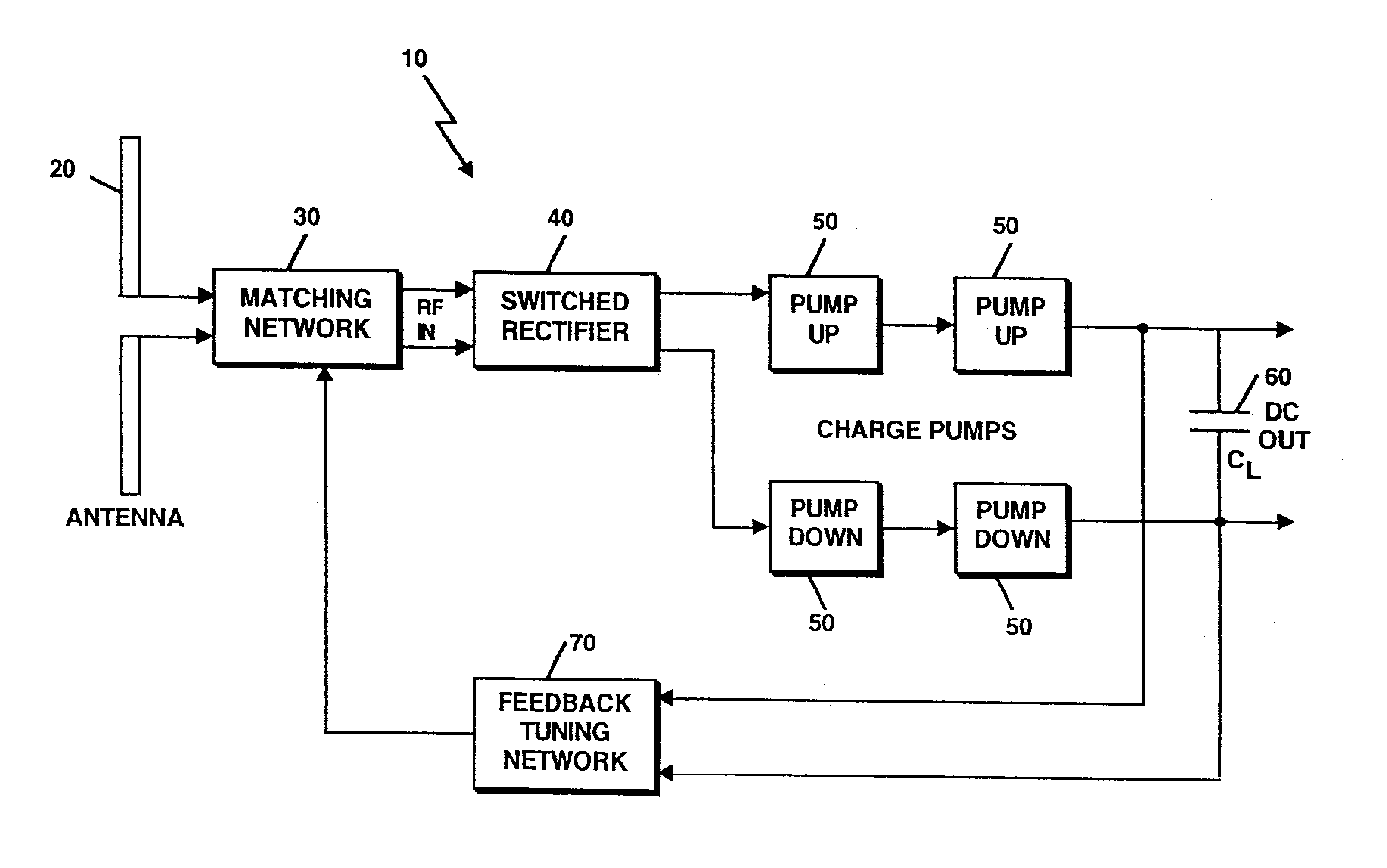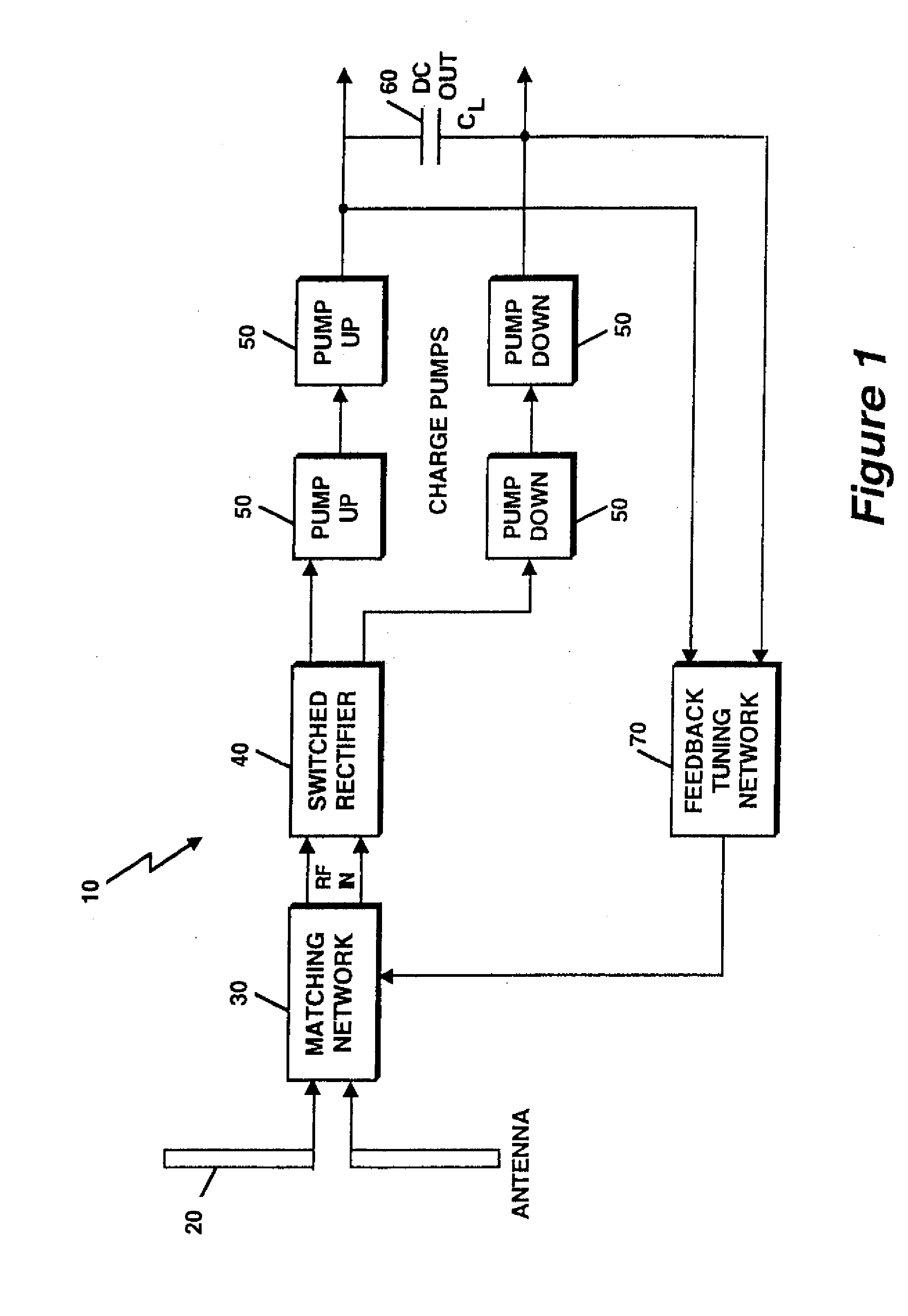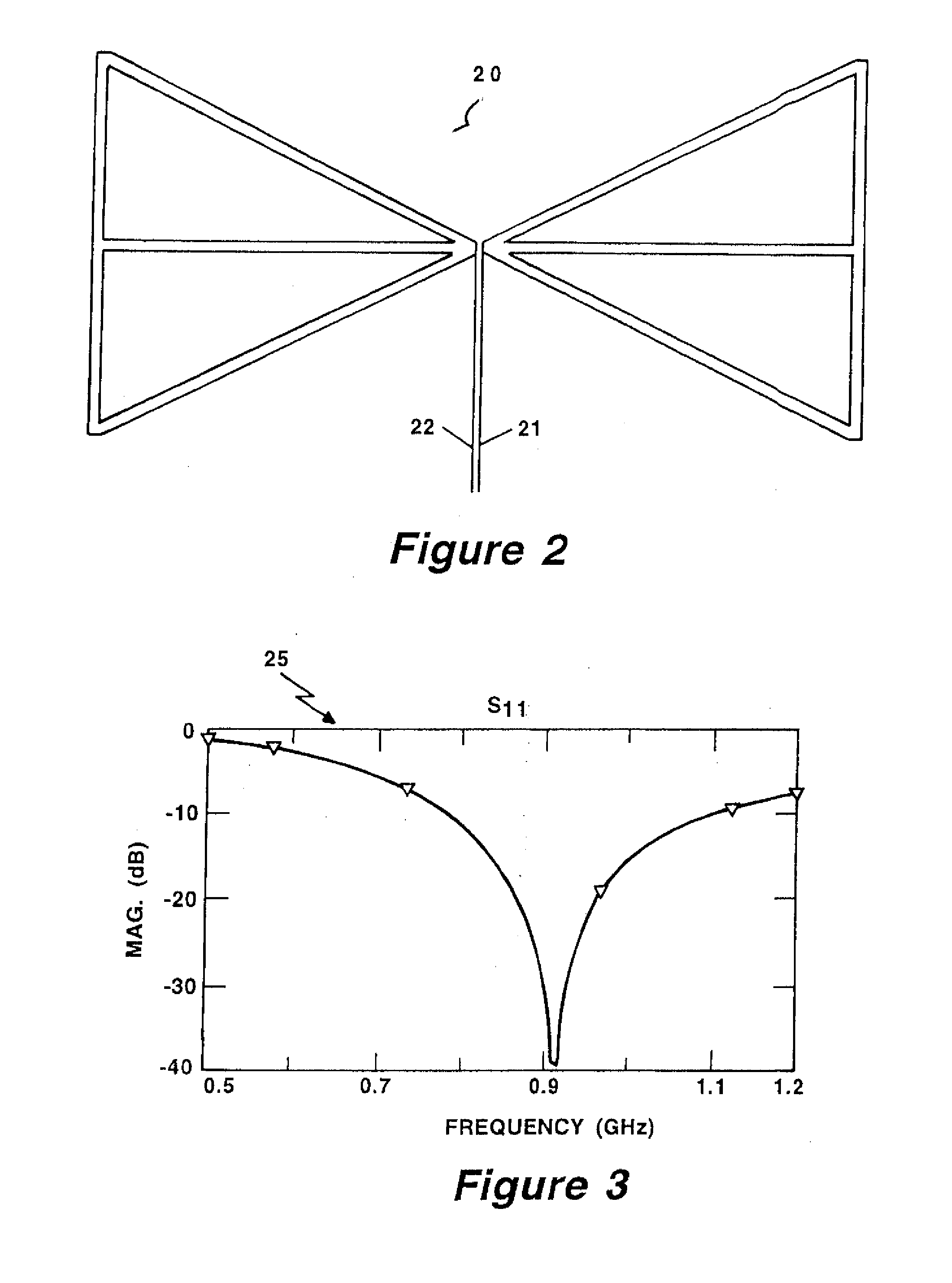RF power extracting circuit and related techniques
a power extraction circuit and power technology, applied in the direction of antennas, antenna details, antenna feed intermediates, etc., can solve the problems of relatively low rf power level, difficult to convert rf energy from rf signals at different frequencies to dc power, and limited operation range of such self-powered devices
- Summary
- Abstract
- Description
- Claims
- Application Information
AI Technical Summary
Benefits of technology
Problems solved by technology
Method used
Image
Examples
Embodiment Construction
[0037] Included herein are various combinations of different circuits and techniques to efficiently extract power from electromagnetic signals having relatively low electromagnetic field strengths, thereby substantially reducing the power threshold required for operation of self-powered devices.
[0038] Referring to FIG. 1, a block diagram of a system 10 for extracting power from electromagnetic radiation includes an antenna 20 for receiving a radio frequency (RF) signal from which direct current (DC) power will be harvested. A matching network 30 is coupled to the antenna 20 to impedance match the antenna 20 to the remainder of the system, thereby obtaining efficient power transfer. A switched rectifier 40 operates on the impedance matched differential RF signal and converts the signal to one or more DC levels. The output of the switched rectifier 40 is coupled to a group of charge pumps 50, which increase the DC levels of the voltage. The output of the charge pumps is coupled acros...
PUM
 Login to View More
Login to View More Abstract
Description
Claims
Application Information
 Login to View More
Login to View More - R&D
- Intellectual Property
- Life Sciences
- Materials
- Tech Scout
- Unparalleled Data Quality
- Higher Quality Content
- 60% Fewer Hallucinations
Browse by: Latest US Patents, China's latest patents, Technical Efficacy Thesaurus, Application Domain, Technology Topic, Popular Technical Reports.
© 2025 PatSnap. All rights reserved.Legal|Privacy policy|Modern Slavery Act Transparency Statement|Sitemap|About US| Contact US: help@patsnap.com



